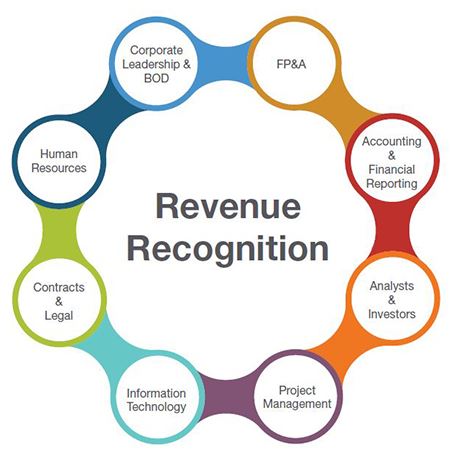Digital Media
By definition, digital media refers to digitally compressed content that includes photos, audios and even videos, which are then encoded and shared via computer networks. The past decade has experienced a surge in new technology that affects digital media, including the continued release of new and better computers, phones and the tossing of old models. Digital media has affected how a majority of the activities in the world take place; the quality of normal day to day activities has also been highly affected by different digital media works. Learning about the different digital media works and the devices that aid them makes it easy to know how to live within the new standards that continue to be set through this platform.
The focus of this paper is the smartphone. This device was created in the year 1994 where it was only able to work in fifteen states in America. Around twenty years down the line, the smartphone has developed in ways that its inventors never thought was possible. With the numerous apps that it contains and the hundreds of functions that every basic smartphone can perform, digital media continues to thrive. Movies are a type of digital media that have had a lot of resources poured into their development and creation. In the past, it was only possible to access movies at the theater whereas today, people have all the movies that they can watch on their smartphones. The devices have affected the profits that theaters made in the past since people are capable of accessing them even before they reach the theaters. This has affected some human activities by rendering some people jobless, such as people who were previously employed in theaters (Dewdney and Ride).
The kind of advancement that is used in the creation and functioning of the smartphone has led to the users of the phone having open access to all sorts of programs and information found on the internet. People can share information, pictures, and videos with very little restrictions. This has resulted in people making all their decisions based on what the trends state, thus showing the extended influence that smartphones and the digital media accessed through them has on its users. Apps such as Snapchat, have their subscribers taking videos and sharing them with anybody willing to see them on the internet. This has led to human interactions being reduced to interactions through the internet. Smartphone users have very limited face to face interaction with others since they are constantly found on their mobile phones.
Another function of the smartphone is that it makes it easy for gamers to access their games even when they are away from their consoles. The gaming industry is a part of the digital media world that has greatly grown in the past decade. Day after day, new and more improved games come up, most having more and more realistic formats that enable the users to feel like they are in the actual game.
The game developers have gone an extra mile and ensured that a majority of the games have a version that is accessible on smartphones, such as the famous “Call of Duty.” These games have made it increasingly difficult for the gamers to leave their homes and do things that are a lot more productive. Some extreme gamers go to the extent of not leaving their houses for long periods of time simply because they cannot stand being away from their games; and when they do leave the comfort of their homes, they play on their phones. Though they are helping in the growth of the video game industry, some of their activities are affected, such as their health, their social relationships and in general their social skills.
Some smartphone companies have even decided to go into business with owners of video games, where they have the video games featured as part of the apps that are provided on the phone. This has become very advantageous to all the parties involved, and the smartphone companies make more money, the video game owners make money since people play their games and the gamers have something to do with their phones. However, it is important to note that having the games on the smartphones further promotes the anti-social behavior that is exhibited by most gamers. Another effect seen on the human activities is that most smartphone users are not able to cope with a situation in their real lives as they are used to the gaming reality (Healey).
The smartphones are the greatest aids of social media. Numerous social network forums have been created over the past few years, and they are all accessible through the mobile phones. An example of such social media is Facebook. This is a social network that has millions of subscribers who use it to voice their opinions and share parts of their everyday lives with other all over the world.

Such platforms have taken over how people work their life choices and everything that impacts their lives. Social media has transformed the world from a place where people had very high levels of privacy to a place where nothing is private. One can access information about a person by simply using their phone to go through their different social media accounts. Further proving how nothing is private any longer (Matheson). When watching the news, there is always some form of news that is related to social media, showing how much it affects our lives (Healey).
Social media has also made it possible for people to voice their opinions on the issues that affect them. Unlike the past where people could only voice their frustrations about the decisions taken by companies and governments through strikes and other forms of industrial action, today people take their opinions to social media. The most recent example of using social media as an outlet is the “black lives matter movement.” People used social media to show that they were not impressed with the number of African Americans lives that were lost in the United States in a very short span of time. This is a very good example of how social media, has been used to affect human activities (Demers).
People used their mobile phones to spread the message on the importance of black lives. Smartphones have also aided in the increase in negative activities. Schools allow students to have their smartphone even in school, and this has led to the increased cases of bullying. Some students use their phones to access very private information about their “enemies” and then spread it to the rest of the school. This leads to extreme cases of bullying being witnessed in learning institutions.
Smartphones allow people to have access to very many forms of digital media, be it games, movies and or social networks. The forms of digital media that are accessed on smartphones are very similar to those accessed using tablets. Smartphones have taken over what most people do with their time. Though governments have tried to restrict the kind of information that people can access through their smartphones, a lot of it is still accessible to them. The smartphones have a lot of influence on the direction that people take. Numerous human activities continue to be influenced by the different digital media works that are accessible on smartphones. The rate of productivity in teenagers has also reduced when compared to a decade back because the teenagers are constantly on their phones. Some parents go to the extent of buying smartphones for children as young as seven years old, thus exposing them to the many dangers that lurk on the internet. When exposed at such an age, the children have to learn how to live with the social expectations that the society imposes on them through the internet (Perse).
That aside, the digital format in smartphones has made them the most recent form of media use. Using an example of Samsung and the iPhone series, one can see the influence that the two brands have on human activities. The two companies are constantly trying to outdo each other by coming up with new phones, one after the other. Therefore, people work to obtain the latest models of the smartphones. This means that people have become more focused on working to buy the smartphones than working to achieve other goals.
Conclusion
Digital media is the world that is yet to be fully understood and developed. Those people that have managed to break into the digital market have reaped a lot of profits from their ventures. Digital media works have had a lot of influence on human beings for over a decade. People have changed how they view matters depending on how social media reacts to what they have done. Human activities have changed since they have had to evolve so as to reap the many benefits that digital media has to offer. There have been some very notable forms of digital media that have affected how people view things.
A good example is a movie, 12 years a slave that got a lot of media attention by showcasing the plight of a black slave. The movie got people talking and brought up a new form of respect for African Americans whose ancestors were slaves. All in all, people should not let digital media affect their behavior and lives in negative ways. They should make sure that they follow only the positive works that promote and improve the quality of their lives. Parents should also take it upon themselves to ensure that the digital media works that their children are exposed to are closely monitored. This will help curb bad behavior such as bullying, which may develop at an early stage. Digital media works have been thoroughly promoted through smartphones; therefore it is important to make sure that whatever one does with their smartphone does not negatively affect them in their present or future life.
Works Cited
Demers, Joanna. “Discursive Accents in Some Recent Digital Media Works.” Oxford Handbooks Online, 2013.
Dewdney, Andrew, and Peter Ride. The Digital Media Handbook. Routledge, 2014.
Healey, Justin. Social Impacts of Digital Media. Spinney P, 2011.
Matheson, Donald. Media Discourses: Analysing Media Texts. Open UP, 2005.
Perse, Elizabeth M. Media Effects and Society. L. Erlbaum Associates, 2000.
Relevant Blog Posts
Thanks for taking the time out to read this blog post and I hope you found it useful. I would be grateful if you could share this blog post via Twitter, Facebook, or Google+ I would like to generate as much social media buzz around this post.




